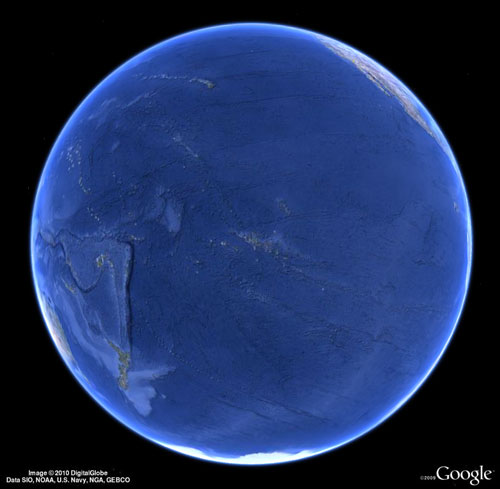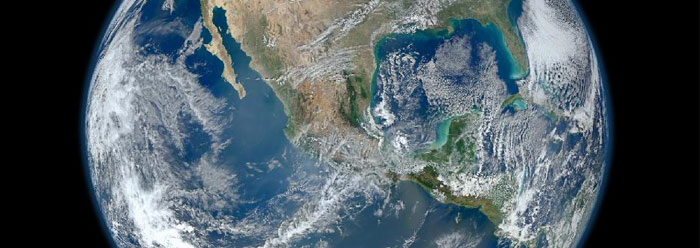NASA's Image of the Day for January 25, "Blue Marble," is a composite of images taken by the Suomi NPP satellite that provides an exquisite view of the earth from space.1 This is the latest in a series that began with the famous "Blue Marble" photo taken in 1972 by the Apollo 17 crew.
This image can help answer a question that creationists often hear: If the entire earth really was covered during the Flood of Noah's day, then where did all that water go?
According to the Bible, the water retreated from the surface of the earth,2 apparently running off the continents into newly created ocean basins. Geophysicist John Baumgardner developed a detailed, feasible model called Catastrophic Plate Tectonics of how the earth's mantle and crust might have shifted and interacted during the Flood year.3 According to this model, the configuration of today's ocean floors formed during the latter months of the Flood year.
In this scenario, powerful potential forces deep under the earth, possibly triggered by impacts that ruptured the earth's crust,4 forced molten rock upward in certain places. This cooled and quickly solidified as it spread out toward such places as the Mid-Atlantic Ridge, shoving crustal plates across the earth's surface. Violent continental collisions forced material upward to create mountains, such as where India collided with Asia to form the Himalayas. Then, giant sheets of muddy water rapidly ran off the continents and carved the valleys in between today's mountains.5 The waters didn't stop until they reached the then-new and deeper ocean basins.
So, what happened to all the water from Noah's Flood? It went into the oceans. As extraordinary images of the earth from space show, water covers the majority of the blue planet. In fact, from at least one vantage point near the center of the Pacific Ocean, virtually no land is visible—just ocean!

The apostle Peter wrote specifically about water's role in restructuring the earth's surface: "For this they willingly are ignorant of, that by the word of God the heavens were of old, and the earth standing out of the water and in the water: Whereby the world that then was, being overflowed with water, perished."6
NASA's new Blue Marble image, like previous ones, shows that the earth's watery surface—which is unique among all known planets—has all the fitting hallmarks of Noah's Flood: mountains made of catastrophically deposited mudrocks, valleys from which mudrock was catastrophically removed, and vast, blue reservoirs that hold the waters that were responsible for the destruction of the planet's primordial surface.
References
- Blue Marble. NASA Image of the Day. Posted on nasa.gov January 25, 2012, accessed January 31, 2012.
- Genesis 8:3.
- Austin, S. A. et al. 1994. Catastrophic Plate Tectonics: A Global Flood Model of Earth History. In Proceedings of the Third International Conference on Creationism. R. E. Walsh, ed. Pittsburgh, PA: Creation Science Fellowship, Inc., 609-621.
- Snelling, A. A. 2012. Did Meteors Trigger Noah's Flood? Answers. 7 (1): 68-71.
- Oard, M. 2008. Flood by Design: Receding Water Shapes the Earth's Surface. Green Forest, AR: Master Books.
- 2 Peter 3:5-6.
Image credit: NASA/NOAA/GSFC/Suomi NPP/VIIRS/Norman Kuring
* Mr. Thomas is Science Writer at the Institute for Creation Research.
Article posted on February 13, 2012.














